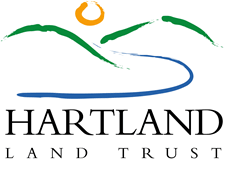Of Interest
So, What's the "Bear Bill" All About?
If you're confused about the "Bear Bill" that was passed by the CT Legislature in 2023 and signed by the Governor last June, you're not alone. There were no fewer than 11 different bills introduced in the 2023 legislative season alone, all with slightly different takes on trying to keep our black bears wild, keep our state residents safe from bears habituated to humans and on the measures that CT residents can take to legally protect themselves from potentially dangerous bears and other wild animals. So here are some FAQ's (and our best answers) about Public Act No. 23-77, An Act Authorizing Certain Killing of Black Bear and Prohibiting Intentional Feeding of Potentially Dangerous Animals.
Is it now illegal to feed the birds? No, this legislation prohibits CT residents from intentionally feeding any "potentially dangerous animal on any land that is not owned by the state". Potentially dangerous animals here refers to animals such as bobcats, coyote, fox and black bears, not birds. However, DEEP strongly advises that you put your bird feeders away from late March until November, when it is most likely that bears are active. Bears like "easy pickings" and they LOVE sunflower seeds, so bird feeders are easy targets for them. They also have great memories and will return to places where they've found good meals in the past. Bears that find food close to our homes will become "habituated" to people - in other words, lose their natural fear of humans - and are therefore at risk of becoming dangerous to us.
Is there now a legal hunting season for bears? Not at this time, although the legislature may take this issue up again in the future. Public Act No 23-77 does, however, offer two ways in which residents may legally kill bears or other wildlife:
• By applying to DEEP for a permit allowing the permit holder to kill wildlife that "threatens or causes damage to agricultural crops, livestock, or apiaries". In order to be approved for a permit, the person must first have taken reasonable measures to protect their crops, livestock or apiaries, such as installing an electric fence or making structures stronger.
• If a bear is either "inflicting ... or about to inflict great bodily harm to a human, injuring or killing such person's pet ... or entering a building occupied by persons".
Doesn't Hartland already have an ordinance that bans the intentional feeding of bears? Yes we do, and Hartland's ordinance remains in effect; however, the Town's ordinance only covers the feeding of bears while the State's new law covers intentional feeding of any wildlife that is considered "potentially dangerous", such as bobcats, coyotes or fox.
Shout-outs to Hartland's State Senator Lisa Seminara and State Representative Mark Anderson for supporting this legislation that balances the safety of our state's residents with that of our state's wildlife.
They’re Back!!!
Photo by Fred Jones
Every year we look forward to the return of the large flocks of Red Winged Blackbirds to the wetland areas in Hartland. They always announce their arrival with a cacophony of song. Listen to the audio above that was recorded recently in our area.
To learn more about this species, please follow the link below to the Cornell Lab Living Bird Magazine.
Sandhill Crane Spotted in Northwestern CT
Special thanks to Eileen Fielding, Director of Audobon Sharon for sharing this exciting news!
Photo by Michael Moschen
Sandhill Cranes are large birds that live in open habitats, so they’re fairly easy to spot if you go to the right places. In summer look for them in small bogs, marshes, and prairies across northern North America and the southeastern United States. In winter they form immense flocks in places like Bosque del Apache, New Mexico, and Anahuac National Wildlife Refuge, Texas. Their bugling calls are unique and can be heard from miles away—they can help alert you to this species’ presence, particularly as they pass overhead on migration. (Excerpt from The Cornell Lab website)
Vernal Pools
Be Aware - Vernal Pools Provide A Habitat For Numerous Rare Plants And Animals
Vernal pools, also known as ephemeral pools, autumnal pools, and temporary woodland ponds, are seasonal depressional wetlands, which in the northeast occur in glaciated areas that are covered by shallow water for variable periods from winter to spring but may be completely dry during the summer and fall. (CT DEEP)







